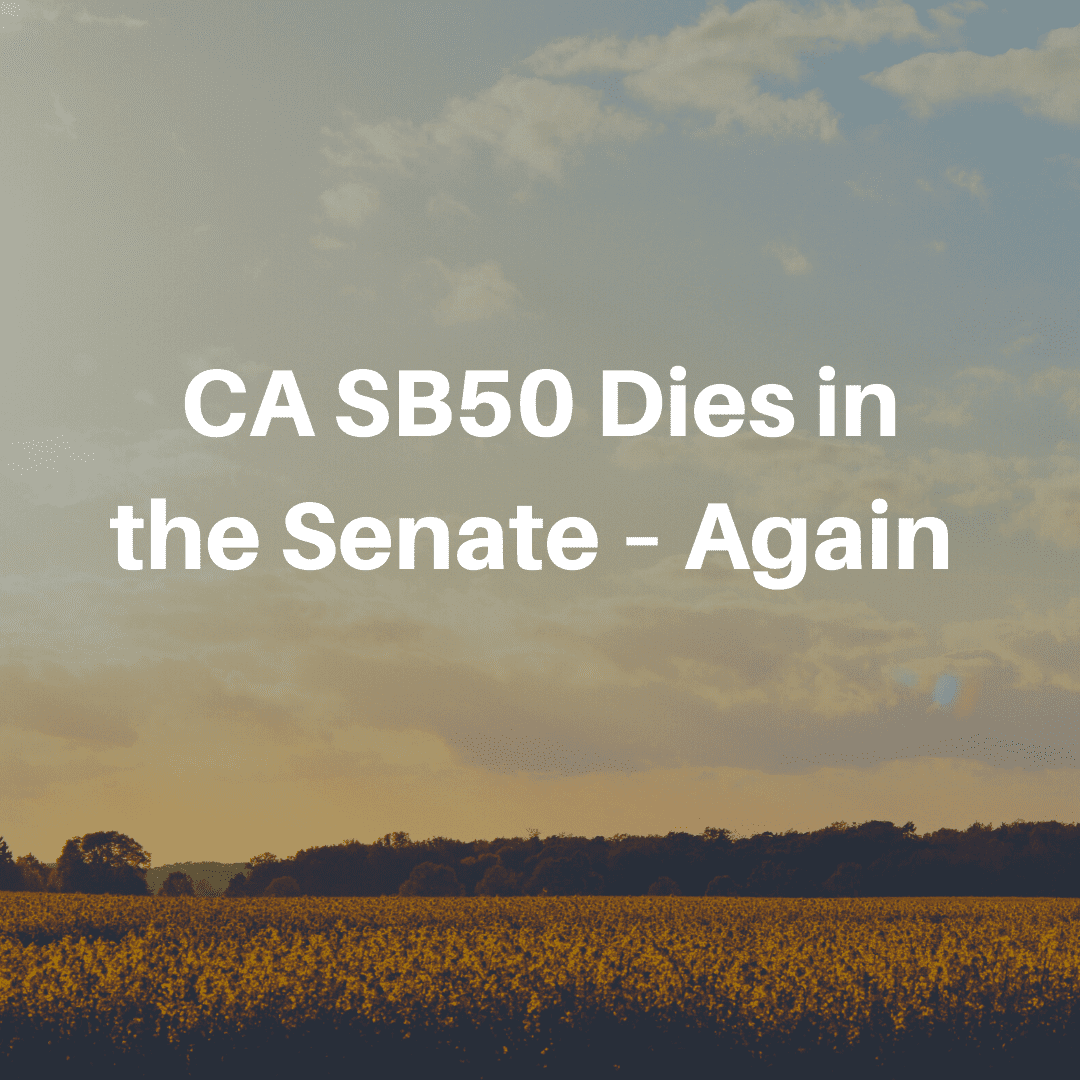
CA SB50 Dies in the Senate – Again
One of the most talked about bills in California is Senate Bill 50 (SB 50) (CA SB50). Central to some much needed housing policy reform, SB 50 is Sen. Scott Wiener’s (D-San Francisco) upzoning response to California’s housing crisis. SB 50 would override local restrictions on density and allow four-to-five-story multifamily developments to be built near “high quality” transit hubs. In early 2020, SB 50 died – for the second time.
The bill defines a “high quality” transit hub as any served by rail and bus with frequent headways, including 6-to-15 minute headways during rush hour.
CA SB50 would apply to multifamily developments within a quarter-mile radius of a bus stop, and a half-mile radius of a rail stop.
California needs to build 3.5 million homes by 2025 to end housing shortage. California loses $140B annually due to the housing shortage; more than $90B in missing construction investment and more than $50B in missing consumption which has been crowded out by housing costs.
Upzoning (noun) – the practice of changing zoning in an area to allow for greater density and increased commercial use. (this is meant to be used as a sub head or stand-alone text box)
Despite opposition, the bill has passed through two committees in 2019, but was struck down at the Senate Appropriations Committee in mid-May 2019. This would have been the bill’s last hurdle before moving along to the Senate floor. At the heart of the debate is the premise of single-family zoning and expansion of density restrictions, which have historically been under the jurisdiction of local communities. Currently, 80 percent of California cities restrict building anything besides single-family homes, with few exceptions.
A similar bill, SB 4 is also making legislative progress. SB 4 differs in that it focuses on allowing for strategic infill for development of affordable workforce housing. To qualify, the property must be located in a city of 50,000 residents within a half mile of a rail line or ferry terminal. The city must also have produced fewer housing units than jobs and failed to have met all of its Regional Housing Needs Allocation goals.









